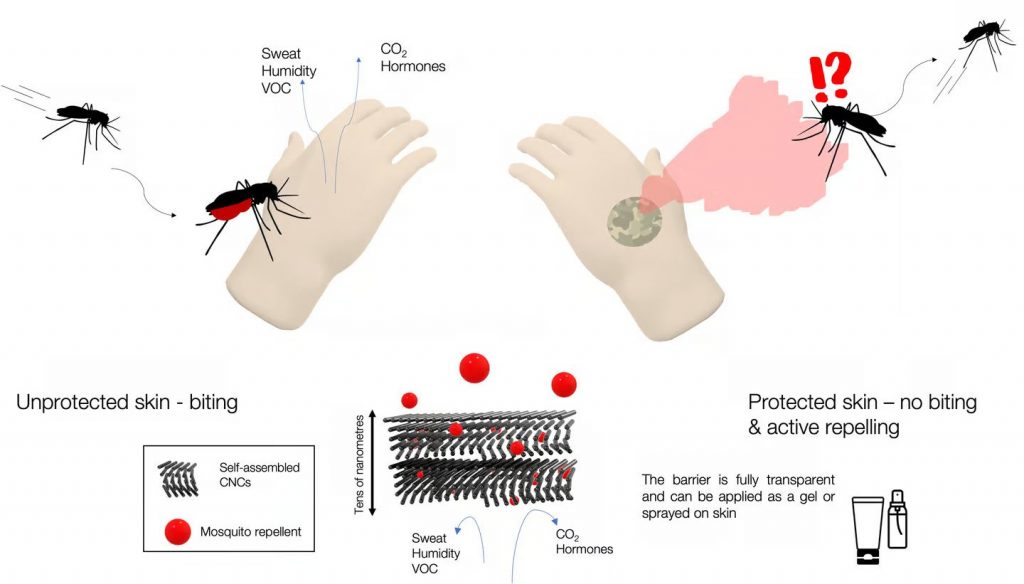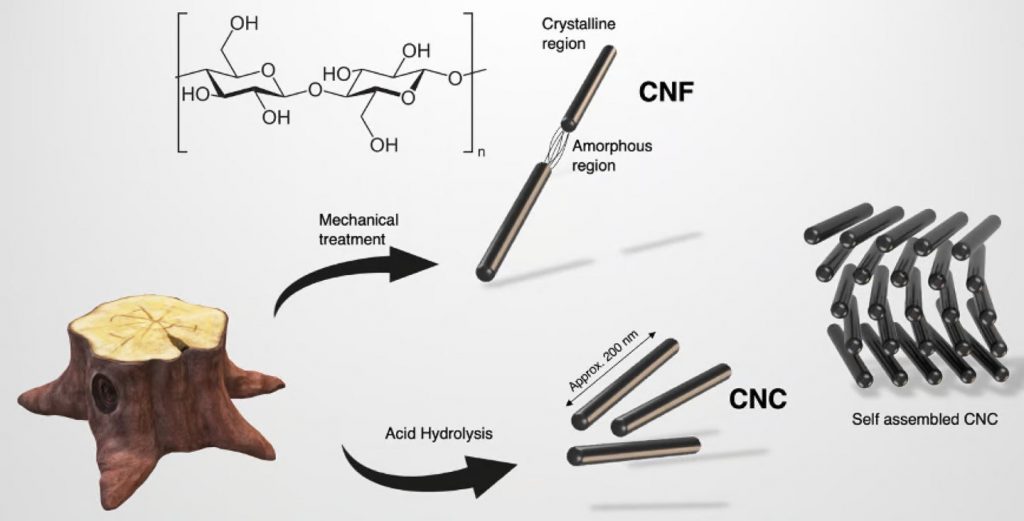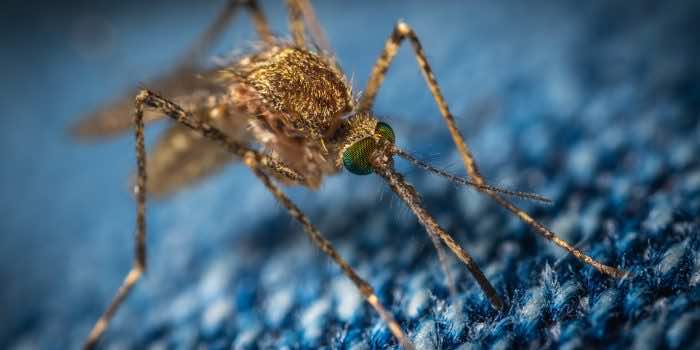Mosquitoes are well-known for their ability to spread illness, and they are considered one of the deadliest animals on the planet. Mosquito-borne illnesses are caused by viruses or parasites that are transmitted to humans and animals through mosquito bites.
They alone are responsible for around 350 million illnesses every year and they’ll keep on increasing with the change in the climate.
New research published in the journal PNAS Nexus by The Hebrew University of Jerusalem has taken a readily available natural molecule, cellulose, and manipulated it to produce a product that saw an 80% reduction in mosquito feeds on human skin.
Cellulose is cheaply and abundantly sourced from wood industry waste and when combined with local food and paper waste, assembles into nanocrystals when treated with sulfuric acid.
These cellulose nanocrystals (CNCs) assemble as a strong but transparent barrier film.

Scientists found that when mixed with water and a small amount of glycerol, these CNCs could be applied to the skin in a spray or gel and block the mosquito’s ability to bite through it to draw blood.
Adult female mosquitoes need blood from humans or animals to produce eggs, so a large reduction in this regard especially in highly populated areas could eventually result in controlling the mosquito population masses from spreading.

CNCs and the efficient barrier they form have been in development for a wide range of ‘green’ use, such as in soundproofing, removing dye from textiles, and making strong binders like superglue and composite materials as tough as bone.
Lead researcher Daniel Voignac from The Robert H. Smith Faculty of Agriculture, Food and Environment and his colleagues tested CNC-treated and non-treated hands, exposing skin for 10 minutes inside an enclosed cage of live Aedes aegypti mosquitoes that contained an average of 15 females.

The result was the thin film of CNC gel acting like a chemical camouflage, with a drop of 80% in bites compared to a hand exposed to the insects without the biomaterial barrier. These very same coats also proved to block the passage of ammonium hydroxide vapor – a common mosquito attractant – when it was applied to filter paper and exposed to the insects.
While the research is in its preliminary stage, it shows great promise for protection against the blood-sucking and disease-spreading mosquitoes in the form of cheap, natural, and transparent compounds that will block the emission of the skin’s chemicals that invite mosquitoes for the feast.
It certainly has the potential to end the worldwide problem of mosquito-borne illnesses and eventually end the spread of mosquito-borne diseases altogether.


